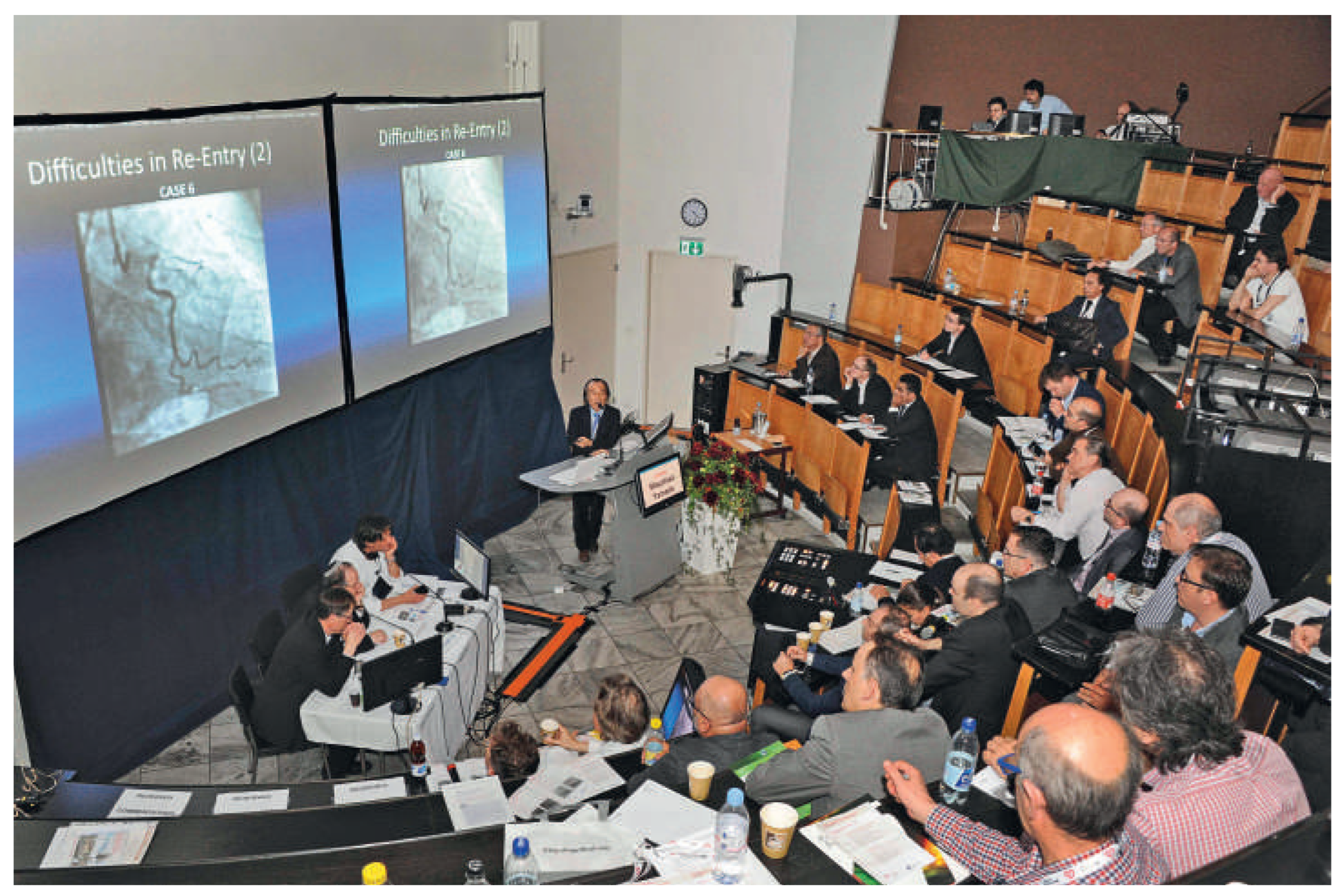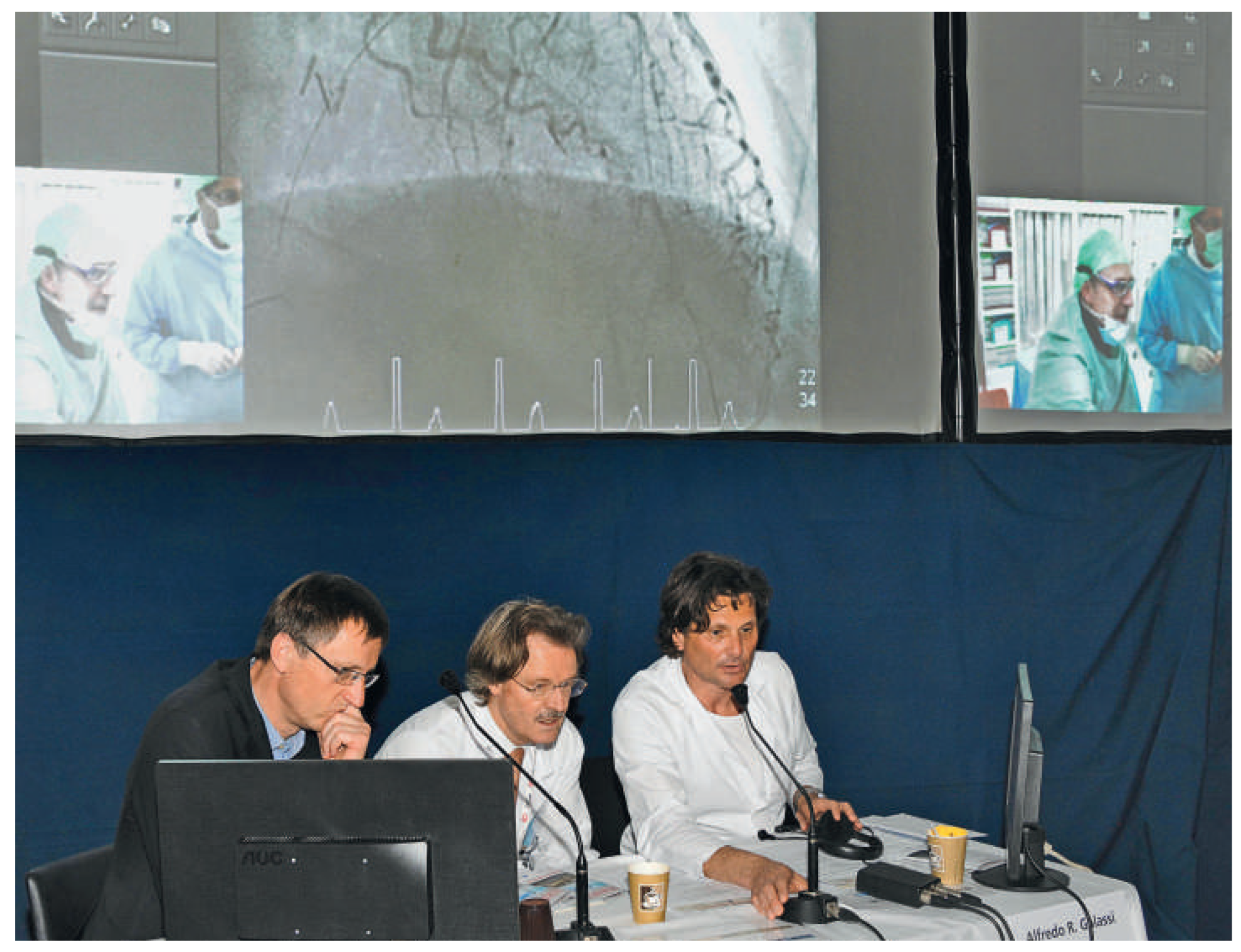When Andreas Grüntzig did his first procedures with his innovative balloon in 1977, he dared to treat only proximal type A lesions. With the introduction of guidewires more distal lesions became accesible. With stents also, more complex plaques were treatable, particularly with the availability of drug-eluting stents. Chronic total occlusions (CTOs) of a coronary artery, however, remain a challenge for most interventionists. With the initially available wires, the success rate was quite low, but thanks to the development of a large spectrum of innovative wires with different properties and microcatheters allowing wires to be changed even in already probed segments, the success rate could be markedly improved and in experienced hands is reaching 80% and more. Both the classical antegrade as well as the more challenging retrograde approach are currently used.
The practice of CTO interventions has been propagated in large part by the Euro CTO Club (
www.eurocto.eu) which was founded in 2006 by the pioneers of the procedure Alfredo R. Galassi, Joachim Buttner, Carlo di Mario, Gerald S. Werner, Dariusz Dudek, George Sianos, Nicolaus Reifart and Hans Bonnier. Since its foundation the mission of the CTO Club was to teach the community of interested interventionists about the procedure and the use of novel materials developed by several companies on a yearly basis. To that end, yearly live courses have been organised and registries established. The First European Live Summit on Retrograde CTO Revascularisation took place in Catania in 2012, followed by the second meeting in 2013 and the third in Sofia, Bulgaria, in 2014.
The University Heart Centre is proud that the 4th European CTO Revascularisation Summit took place this May in Zurich, where it all started on September 16, 1977 with Andreas Grüntzig (Figure 1). The Zurich course took place on Friday and Saturday, May 8 and 9, 201,5 with 12 live cases and live in-a-box case presentations by participants, as well as lectures by highly experienced interventional cardiologists in the Andreas Grüntzig Catheterisation Laboratories. With faculty members from 5 countries and 155 participants, the technique of antegrade and retrograde revascularisation of CTOs was demonstrated to participants in detail, with educational live cases (Figure 2). Each case was presented by a fellow of the Department of Cardiology and the strategy extensively discussed by the operators and the panel of experts, from the selection of the guiding catheter to the different guide wires, the handling of microcatheters, the use of intravascular ultrasound to the selection of balloons and stents (Figure 4). A session for nurses taken in the German language illustrated all tips and tricks for assistance with different devices in these particular procedures.
Figure 1.
A. Galassi from Catania (Course Director) and O. Gaemperli from Zurich (Course Co-Director).
Figure 1.
A. Galassi from Catania (Course Director) and O. Gaemperli from Zurich (Course Co-Director).
Figure 2.
An enthusiastic audience followed the lecture by Masahisa Yamane, the pioneer of CTO procedures.
Figure 2.
An enthusiastic audience followed the lecture by Masahisa Yamane, the pioneer of CTO procedures.
Figure 3.
155 participants from 36 countries followed the CTO Course.
Figure 3.
155 participants from 36 countries followed the CTO Course.
Figure 4.
E.H. Christiansen, T.F. Lüscher and A.R. Galassi commented the live interventions performed in the Andreas Grüntzig Laboratories.
Figure 4.
E.H. Christiansen, T.F. Lüscher and A.R. Galassi commented the live interventions performed in the Andreas Grüntzig Laboratories.
With the success of this year’s course, another session is already secured and awaits applications from colleagues interested in chronic total occlusions.







